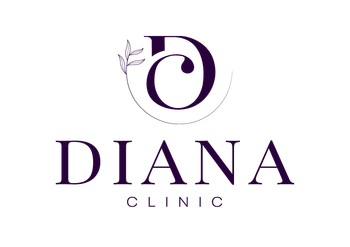Comprehensive Guide to Understanding and Treating Hair Loss in Malaysia
Hair loss is a common issue affecting people of all genders, ages, and backgrounds. Whether it's gradual thinning, receding hairlines, or noticeable bald patches, hair loss can significantly impact one's appearance, self-esteem, and overall well-being. You can find the most suitable treatment by understanding the various types and causes of hair loss.
What is Hair Loss?
Hair loss involves the partial or complete loss of hair from areas where it typically grows, such as the scalp. Losing 50-100 strands of hair daily is normal and usually doesn't result in noticeable thinning due to the continuous hair growth cycle. However, when new hair fails to replace the lost hair, hair loss becomes evident.
Hair growth occurs in three phases:
- Growth Phase (Anagen Phase): This phase lasts 2-6 years and comprises about 85% of the hair on the head, during which hair actively grows longer and thicker.
- Transition Phase (Catagen Phase): Lasting about two weeks, this phase involves cell division stopping, the hair follicle shrinking, and hair preparing for the loss phase.
- Resting or Loss Phase (Telogen Phase): For approximately three months, this phase affects 8-14% of hair. Metabolic activity stops, leading to hair shedding and eventual regrowth.

Who Does It Affect?
Hair loss can affect individuals of all genders, but certain factors increase susceptibility.
- Men are more likely to experience androgenetic alopecia.
- Women may experience hair loss due to hormonal changes during menopause or childbirth. People with a family history of hair loss, underlying medical conditions, or high-stress levels are also more prone to hair loss.
Causes of Hair Loss
Hair loss can stem from various factors, including:
- Diseases: Conditions like thyroid dysfunction, diabetes, and autoimmune diseases can lead to hair loss.
- Medications: Drugs such as chemotherapy agents, painkillers, and antibiotics can cause hair loss.
- Radiotherapy and Radiation Accidents: Exposure to ionizing radiation can result in temporary or permanent hair loss.
- Hormonal Changes: Pregnancy, childbirth, menopause, and hormonal treatments can disrupt hair growth.
- Nutrition: Malnutrition, radical diets, and deficiencies in essential nutrients like iron and vitamins can impact hair health.
Types of Hair Loss
- Male Pattern Baldness: Also known as androgenic alopecia, this is the most common type of hair loss in men.

- Female Pattern Baldness: This type is the most common in women, characterized by progressive thinning of the hair on the scalp.

- Postpartum Hair Loss: Excessive shedding of hair a few months after childbirth, caused by hormonal fluctuations.
- Temporary Hair Loss: This can occur due to stress, illness, or other temporary factors and typically resolves over time.
- Hair Thinning: Often an early sign of androgenetic alopecia, it can be a precursor to more significant hair loss.
Treatment Options
Lifestyle Changes
Adjusting your diet, increasing exercise, reducing stress, and quitting smoking can help minimize hair loss. A Mediterranean diet rich in vegetables, fish, nuts, and olive oil is particularly beneficial. Increasing protein intake and consuming foods rich in vitamins A, B, C, and D can also promote hair growth.
Food Supplements
Multivitamins and supplements like biotin and zinc can support hair health. Vitamin D deficiency is linked to hair loss, so supplements may be necessary, especially for those with limited sun exposure. Saw palmetto extract and ginseng are also believed to help, though scientific evidence is limited.
Hair Care
Gentle shampoos, natural oils like coconut or olive oil, and scalp massages can protect and nourish hair. Hair lotions containing alfatradiol may help reduce hair loss.
Medical Treatments
- Low-Level Laser Therapy (LLLT): A non-invasive method that stimulates hair growth through stem cell activation. (Read More)
- Minoxidil: Topical treatment effective for about two-thirds of patients in halting hair loss and promoting regrowth.
- Finasteride: Slows hair loss progression and stimulates new hair growth primarily in men under 60 by inhibiting DHT production.
- Micro Needling: Stimulates hair follicle regeneration through controlled micro-injuries, promoting natural hair growth.
- Platelet-Rich Plasma (PRP): Involves injecting concentrated platelets into the scalp to stimulate hair follicles and enhance growth.
- Anti-Androgens or Estrogens: Can be prescribed to manage progressive hair loss, requiring careful medical supervision.
- Hair Transplantation: Provides a permanent solution by relocating healthy hair follicles to balding areas.
- Stem Cell Hair Transplantation: Utilizes advanced stem cell technology with the T-LAB Dermomine Micrograft Kit to achieve exceptional hair restoration results.(Read More)
Conclusion
Effective hair loss treatments range from lifestyle changes and dietary supplements to hair care practices and medical treatments like minoxidil, finasteride, and hair transplantation. While medical treatments are the most effective, they can be costly and may have side effects. Consult a healthcare professional for a proper diagnosis and tailored treatment plan.
Ready to improve your hair health? Whether you're facing hair loss or want to boost your hair's strength, take action today. Visit Klinik Dr. Diana for expert diagnosis and personalized treatment. Our team specializes in comprehensive hair care, providing tailored solutions for your needs. Schedule your appointment now and start your journey towards healthier, more beautiful hair.
Contact Klinik Dr. Diana today to book your consultation and take the first step towards healthier hair.
